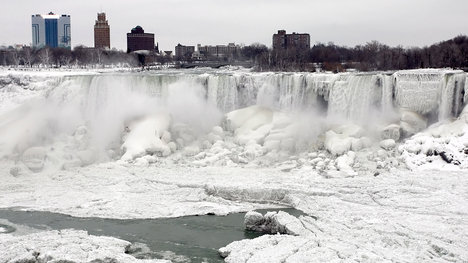(p. D7) In the early 2000s, Ary A. Hoffmann, a biologist then at La Trobe University in Melbourne, Australia, wondered how the many species in tropical rain forests would cope when their humid environment dried out.
. . .
. . . at the end of the experiment, the flies were no more resistant to dry air than their forebears. The flies seemed to lack the genetic potential to evolve. Those results suggested that if the rain forest home of Drosophilia birchii loses its high humidity, the flies will die off.
. . .
Recently, two of Dr. Hoffmann’s collaborators — Belinda van Heerwaarden and Carla M. Sgrò of Monash University — decided to rerun the experiment, but with a crucial twist.
Rather than expose the flies to 10 percent relative humidity, Dr. van Heerwaarden and Dr. Sgrò tried 35 percent. That’s still far drier than the moist air of rain forests, but it’s not the aridity one might encounter on a summer day in Death Valley.
“It’s a humidity that’s more relevant to the predictions for how dry the environment would become in the next 30 to 50 years,” Dr. Sgrò said.
. . .
Unlike the flies in the earlier studies, it didn’t take long for these to start evolving. After just five generations, one species was able to survive 23 percent longer in 35 humidity.
For the full story, see:
Carl Zimmer. “MATTER; Study Gives Hope of Adaptation to Climate Change.” The New York Times (Tues., JULY 29, 2014): D7.
(Note: ellipses added.)
(Note: the online version of the story has the date JULY 24, 2014.)
The recent paper discussed above, is:
van Heerwaarden, Belinda, and Carla M. Sgrò. “Is Adaptation to Climate Change Really Constrained in Niche Specialists?” Proceedings of the Royal Society B: Biological Sciences 281, no. 1790 (2014): 1-1.


